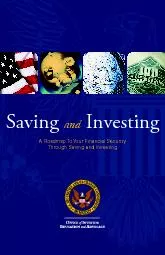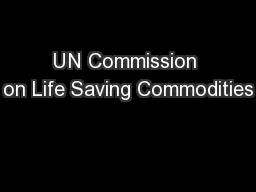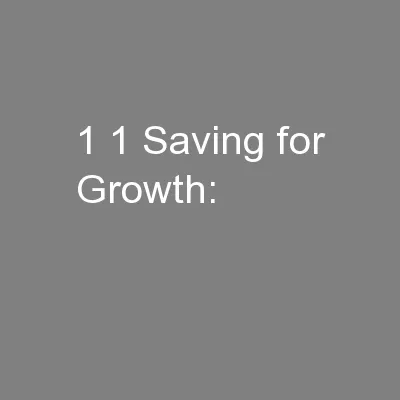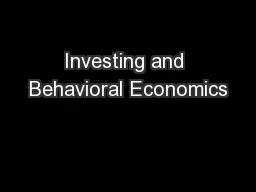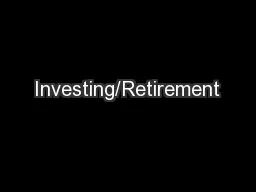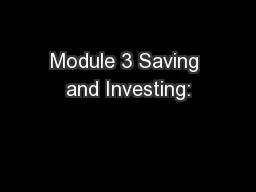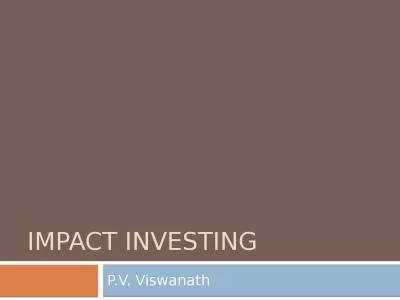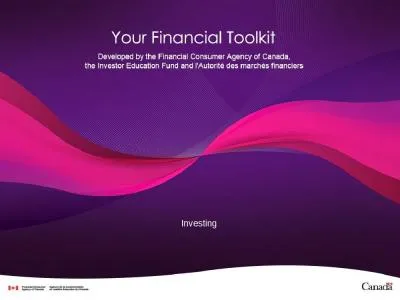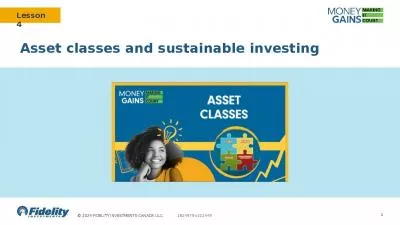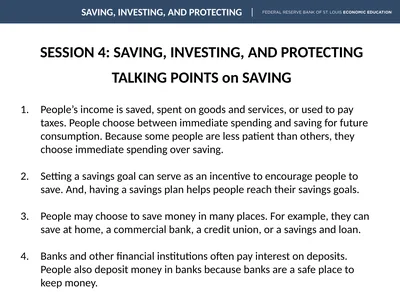PDF-SAVING AND INVESTING
Author : brown | Published Date : 2021-05-15
2 A ROADMAP TO YOUR JOURNEY TO FINANCIAL SECURITY 3 Don146t Wait to Get Started YOU CAN DO IT IT146S EASIER THAN YOU THINK No one is born knowing how to save or
Presentation Embed Code
Download Presentation
Download Presentation The PPT/PDF document "SAVING AND INVESTING" is the property of its rightful owner. Permission is granted to download and print the materials on this website for personal, non-commercial use only, and to display it on your personal computer provided you do not modify the materials and that you retain all copyright notices contained in the materials. By downloading content from our website, you accept the terms of this agreement.
SAVING AND INVESTING: Transcript
Download Rules Of Document
"SAVING AND INVESTING"The content belongs to its owner. You may download and print it for personal use, without modification, and keep all copyright notices. By downloading, you agree to these terms.
Related Documents

